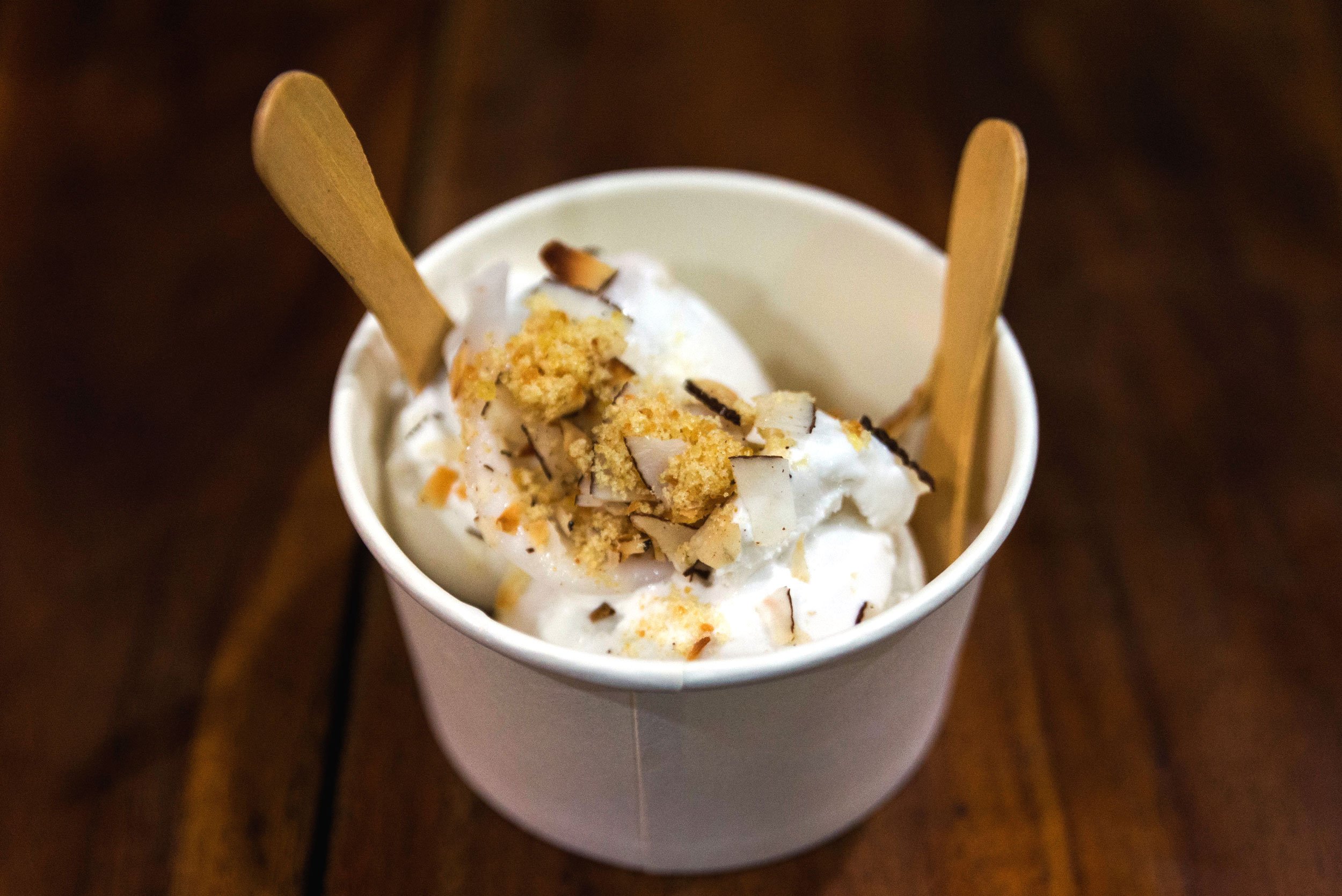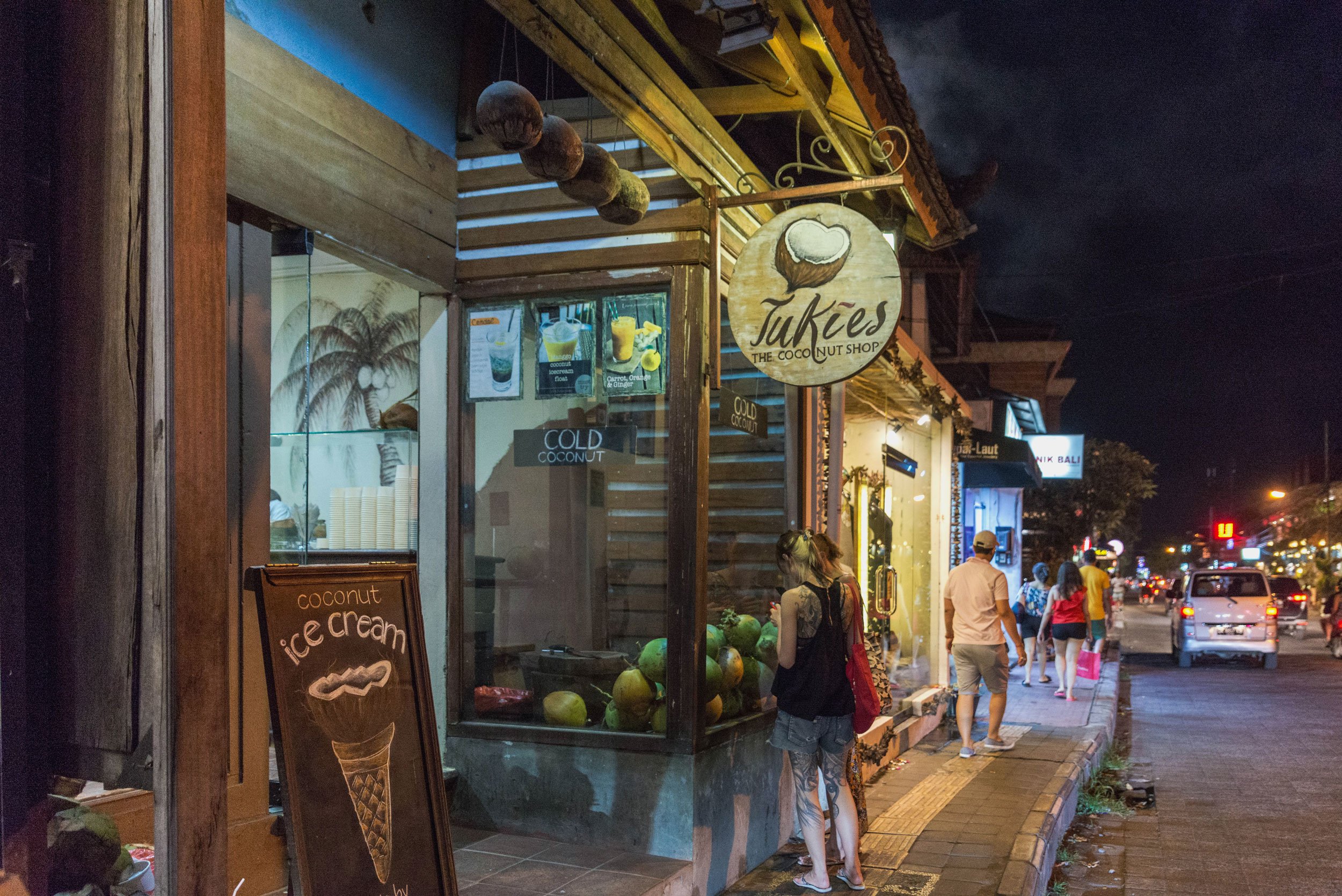Bali: Ubud
Ubud is in the uplands of Bali island and home to about 74,000 people
The area is known for its rice terraces, Hindi temples, rainforests and deeply rooted traditions
About 3 million tourists visit each year and it’s the most popular destination in Bali
As the first rice field came into view from my taxi window, I knew Ubud had some beautiful sights in store. And that it did.
Ubud, which is a couple hours north of the busier Seminyak and Kuta areas, is probably best known for its picturesque rice terraces and monkey forests. It can also be a great hub due to its location in relation to a lot of the popular sightseeing spots.
Incredibly popular with foreigners, Ubud (and Bali as a whole) actually struggles with balancing its accommodation of tourists with keeping its vast swaths of countryside undeveloped. Being from Hawaii, this isn't such an unfamiliar issue.
As our driver put it, buying cheap land and developing villas here is a good investment, he even recommended it to me, but tourists come here for the empty fields and ability to relax in nature.
We stayed at the beautiful Nau Villas, a newer getaway in one of those secluded areas and about a 30 minute ride from Ubud town.
They provided us with a private driver for about 600,000-900,000 IDR ($42-63 USD) per day, which included gas, parking and everything besides entrance fees.
Our driver, Kadek, a villa staff from nearby who began his career traveling the world while working on a cruise ship, insisted that even if we took a couple hours longer, the price would be the same because his priority was for us to have a good experience.
He was one of many locals that we encountered on the trip that showed us incredible hospitality.
We decided on splitting the majority of our exploration into two full-day trips.
Day 1
Visits to Tirta Empul Water Temple, Tegenungan waterfall, coffee tasting at Uma Pakel, and the Tegalalang rice terrace.
Tirta Empul Water Temple
Witnessing Balinese Hindus take part in ritualistic purification under the morning sun at Tirta Empul Water Temple was amazing.
Seeing them rinse themselves under the spring fountains, under all except for the last few which are in the case of a death in the family, was easily the most interesting despite this area being only one part of the temple.
Wearing a sarong (traditional skirt, required at most temples) which was given at the entrance, we explored the different areas of the temple for about 30 minutes, spending most of the time at the bath. While we didn't enter the water ourselves, it was still a fascinating and unforgettable Balinese experience.
Tegenungan waterfall
Fresh legs were gone after the Tegenungan waterfall. Getting to the falls required hiking down several flights of steep steps and of course, it's one way in, one way out. It's no wonder our driver waited in the parking area.
The river banks below the falls are separated by makeshift log and bamboo bridges, and are made for photo-taking tourists. There are photo props, a swing, some lovey dovey painted areas and "bird nests" to sit in. This type of thing tends to be at a lot of attractions around Bali.
Uma Pakel coffee tasting
"Shit coffee" as it was described to us by our funny host at Uma Pakel.
Before the trip, I had no idea about Balinese or Indonesian cuisines, but I knew about their coffee. Drinking some Kopi Luwak in Bali, was definitely on the list.
Bali is one of the prime locations for Kopi Luwak, but locals don't really drink it. Being one of the world's most expensive coffees due to the long process beginning by the civet weasel eating the best coffee cherries and then pooping them out, its cost is several times that of a normal cup of joe and hardly reasonable.
For about 49,000 IDR ($3.50 USD) per person, the tasting included about 14 different coffees and teas from ginseng coffee to lemongrass tea. A cup of smooth Kopi Luwak was only about $5 USD more. Take that, Starbucks.
Tegalalang Rice Terrace
Our afternoon ended here, and it's so easy to see why the Tegalalang rice terrace is one of Bali's more iconic spots. The curves of each rice field tier, the shades of green and 3PM afternoon sun created an amazing landscape to wander around.
While there's some noise from crowds and traffic around the edges of the rice terraces, the fields themselves were quite peaceful.
Some of the walking paths are free to explore, but others require a 10,000 IDR ($0.70 USD) per person or so fee. The rice terrace wasn't packed, but going deeper into the paid areas got us further from other tourists and the noise from the swings and cafes along the perimeter.
This was, as expected, one of the more memorable sights of the trip and would top my list if I were in town again.
Day 2
We headed further out from Ubud on the second day, stopping at the Sangeh Monkey Forest [map] before making our way to Pura Ulun Danu and Tanah Lot temples.
Sangeh Monkey Forest
If you can't tell by the big monkey statue at the park entrance, the monkeys run the forest here.
Apparently, the monkeys at Sangeh are said to be a little less aggressive than the more heavily visited forest in Ubud town. Still, as we found out, it's best to be ready to be jumped.
A park guide was nice enough to take us in, serving as a monkey snack provider, photographer and bodyguard. He did try to sell us a cheesy tourist photo at the end which we politely declined. We gave him a tip instead.
Pura Ulun Danu temple
Creatively built to give the illusion that it’s floating on water, the temple sits in a lake that happens to be inside a big crater.
The temple grounds resemble a nicely kept park, the type you'd bring some sandwiches to for a picnic.
The climate is crisp and cool, and the surrounding area is beautiful with its terraced landscapes. According to our driver, many of Bali's villas and resorts use fruits and vegetables grown in this region.
Tanah Lot temple
Weaving through traffic, we made it out to the island's west-facing shore to Tanah Lot temple. The temple is most famous for the peninsula that jets out in the ocean and the sunsets that happen behind it.
We walked the shoreline, exposed by the low tide, just before sunset. A couple thing's are for sure: Tanah Lot gets crowded with tourists and if there's anything that bridges international cultures together, it's the struggle to get the perfect picture to upload and share.
We finished off the day with the temple's Kecak dance, a ritualistic performance done around sunset. Smaller than the one at Uluwatu temple, it was still entertaining, although some members seemed to just go through the motion while others gave it their all.
Our last day was spent relaxing at the villa and getting gifts to bring home.
There were a couple of good markets selling a little Ubud to bring back. Delta Dewata on Jl. Raya Andong street [map] is the biggest with a wide selection. Be ready for an outdated checkout if you pay with card though - outdated as in they write your transaction with pen and paper outdated. The other is Pepito which is a slightly upscale, Bali version of Whole Foods.
East Bali Cashews and Vel Moriz (IG) chocolates were some good, non-coffee picks. Stay away from alcohol though, prices were ridiculously high - 1,560,000 IDR ($110 USD) Johnnie Walker Black Label high!
My time in Ubud was one I will remember. In some ways, like I mentioned, it reminded me of my home in Hawaii. Ti leaves, coconuts and beaches, yes, but also an island struggling with the costs and benefits of development, foreign tourism and investments.
There was a closeness in the people that I also saw, though. We came across a few neighborhood ceremonies where everyone in the town had gathered together at their local temple. Seeing that as well as our driver's friendly interactions with so many that we came across got me realizing that at the end of the day, the people around Ubud seem to have a good grasp on what's really important in life.
Tukies Coconut Shop



If you only have one meal out in Ubud, making it Tukies ice cream may not be such a bad idea. Really. Credit to my friend Rayna for this awesome rec, Tukies' coconut ice cream was instant love. Creamy and fresh, it's probably the best I've had. We went twice, by the way, and there's no shame in admitting it.












My review on Nau Villas - A relaxing Ubud getaway that seamlessly and luxuriously immerses you in the surrounding nature